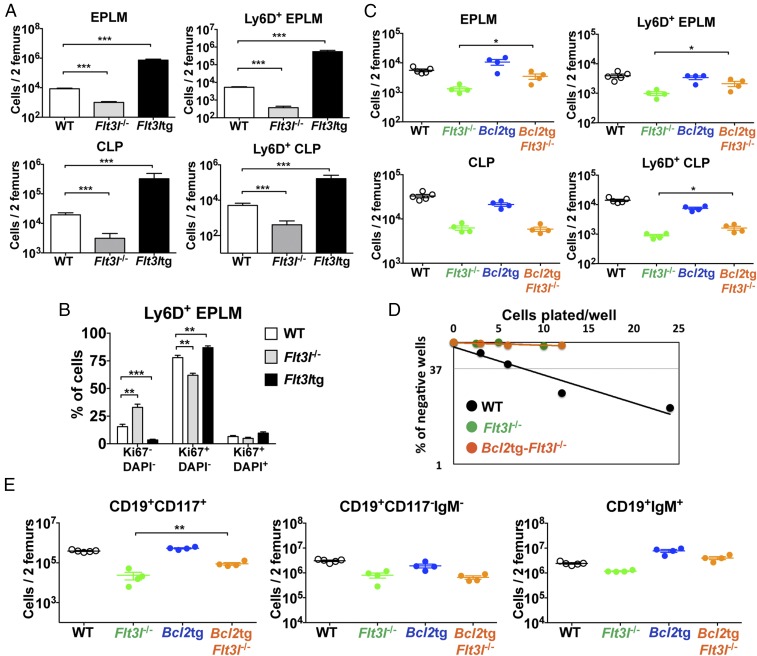Fig. 6.
FL promotes proliferation but not survival of Ly6D+CD135+CD127+CD19− progenitors. (A) Numbers of EPLM (Upper Left), CLP (Lower Left), Ly6D+ EPLM (Upper Right), and Ly6D+ CLP (Lower Right) from WT (n = 14), Flt3l−/− (n = 10) and Flt3ltg (n = 9) mice. Bars show mean ± SEM. (B) Cell cycle analysis of Ly6D+ EPLM from WT (n = 5), Flt3l−/− (n = 3), and Flt3ltg (n = 9) mice. Graph shows percentages of Ki67−DAPI−, Ki67+DAPI−, and Ki67+DAPI+ Ly6D+ EPLM. Bars show mean ± SEM. (C) Numbers of EPLM (Upper Left), CLP (Lower Left), Ly6D+ EPLM (Upper Right), and Ly6D+ CLP (Lower Right) from WT and mutant mice, as indicated on the x axes. For each mouse genotype, mean ± SEM is shown. (D) In vitro limiting dilution analysis of Ly6D+ EPLM B-cell potential. Ly6D+ EPLM were sorted from WT, Flt3l−/−, and Bcl2tg-Flt3l−/− mice and plated at the indicated concentrations on OP9 stromal cells together with IL-7. (E) Numbers of CD19+CD117+ (Left), CD19+CD117−IgM− (Middle), and CD19+IgM+ (Right) bone marrow cells from WT and mutant mice, as indicated on the x axes. For each mouse genotype, mean ± SEM is shown. *P ≤ 0.05, **P ≤ 0.01, ***P ≤ 0.001.

